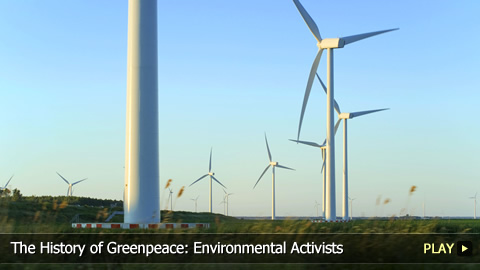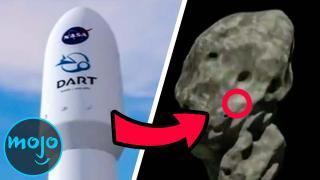The History of Greenpeace: Environmental Activists

Origins of Greenpeace
Superhero Origins: The Flash (Barry Allen)
Greenpeace was originally founded as a means to stop underground nuclear testing in an area of Alaska that was home to a number of endangered animal species. Though the grassroots organization failed to stop the United States from detonating that original bomb, its existence initiated a flood of public interest. The group officially became Greenpeace in 1972, after the U.S. government had stopped testing in that Alaskan region.
Expanding Their Mission
By the mid-1970s, the organization had branched out from exclusively protesting nuclear weapons, to fighting other environmental causes as well. These included whaling, commercial seal hunting and toxic waste.
From a Grassroots Campaign to a Legitimate Organization
Top 10 Greatest Rebels In History
By 1977, factions of the organization began operating across the world. Greenpeace has since evolved from its grassroots beginnings to become an organized group, with offices in over 40 countries. Today the organization is based in Amsterdam, the Netherlands, and claims 2.8 million supporters around the world.
The Greenpeace Mandate
Top 10 Youngest and Most Influential Activists
Part of the Greenpeace mandate from the beginning has been to eliminate all nuclear weapons and put an end to our reliance on non-renewable resources. Its main goal is to stop climate change, and the group is credited with raising public awareness of that issue markedly throughout the 1990s. In fact, Greenpeace was one of the first groups to create a plan that championed sustainable development as a solution to climate change.
Scientific Research
Top 10 Biggest Scientific Discoveries of 2022
In addition to protesting and raising awareness, Greenpeace has also used its own laboratories to research and locate alternative solutions to ongoing problems. This effort has included the invention of Greenfreeze, a technology for refrigerator manufacturing that eliminates the use of ozone-depleting CFCs. Today, over one third of refrigerators produced are based on this technology.
Funding and Staying Independent
Keeping The CEO Role When You Raise Funding?
Funding for the group comes in the form of donations from foundations and individual supporters. A strict screening process ensures it does not receive funds from governments, political parties or corporations. This is so Greenpeace can keep clear of their influence and remain independent.
Protest Methods
3 Need to Know Facts About Colin Kaepernick's Protest
Greenpeace traditionally uses non-violent means to bring attention to environmental problems. The group utilizes peaceful protests, petitions, and more unconventional – and sometimes disruptive – means to its advantage. For example, the passive resistance technique of “bearing witness” uses the protesters’ presence as a sign of disapproval, and is very popular with Greenpeace. The group is also famous for aggressive and striking advertising campaigns to get its point across.
Controversy and Criticism
DUMBEST Controversy in Gaming History!
In certain instances throughout its history, some members have taken their creative protests to the next level, and have wound up facing prosecution for what can be considered unorthodox and extreme actions. The organization has come under fire for using illegal means of earning media attention, and this has caused well-publicized controversy for the group. Despite the controversy, there is no doubt that Greenpeace has become one of the most effective and successful environmental protection groups in the world.








